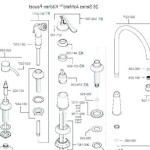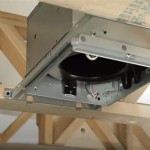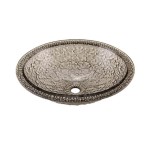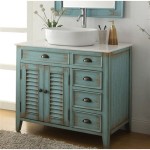Commercial Grade Bathroom Sinks: Durability and Design for High-Traffic Environments
Commercial grade bathroom sinks represent a significant investment for businesses, institutions, and public spaces. Unlike residential sinks, these fixtures must withstand constant, heavy use, resist vandalism, and maintain a clean, appealing appearance despite the high volume of traffic. Understanding the nuances of material choices, design considerations, and installation requirements is crucial for selecting the optimal sink solution that balances functionality, durability, and aesthetics.
Material Selection: A Foundation of Longevity
The material from which a commercial sink is constructed significantly impacts its lifespan, maintenance requirements, and overall cost-effectiveness. Several materials are commonly used in commercial sink manufacturing, each offering distinct advantages and disadvantages.
Stainless Steel: Stainless steel is a prevalent choice due to its exceptional durability, corrosion resistance, and ease of cleaning. It is highly resistant to staining and bacterial growth, making it a hygienic option suitable for restrooms in hospitals, food service establishments, and public restrooms. Its strength allows it to withstand heavy use and potential impacts. Different grades of stainless steel exist, with 304 stainless steel being a common choice for commercial sinks due to its balance of cost and performance. The gauge (thickness) of the stainless steel also affects its durability; a lower gauge number indicates a thicker, more robust material.
Solid Surface: Solid surface materials, such as Corian and Swanstone, are non-porous acrylic or polyester composites. These materials offer a seamless, aesthetically pleasing appearance, with a wide range of colors and patterns available. Solid surface sinks are highly resistant to stains and scratches, and any minor damage can often be repaired. They are generally more expensive than stainless steel but offer a higher degree of design flexibility. Their non-porous nature makes them easy to sanitize and resistant to bacterial growth. However, they may be less resistant to extreme impact compared to stainless steel.
Vitreous China: Vitreous china, a ceramic material coated with enamel and fired at high temperatures, is a traditional choice for sinks. While common in residential settings, its use in commercial environments is typically limited to lower-traffic areas due to its susceptibility to chipping and cracking under heavy use. However, high-quality vitreous china sinks can offer good durability and are relatively easy to clean. They are also available in a variety of styles and colors. The thickness of the material and the quality of the enamel coating are critical factors determining the lifespan of vitreous china sinks in a commercial setting.
Cast Iron: Cast iron sinks, coated with enamel, offer a classic look and are known for their durability and resistance to heat. However, they are extremely heavy, which can complicate installation and require reinforced supports. While the enamel coating provides a smooth, durable surface, it is susceptible to chipping and scratching over time, exposing the cast iron beneath, which can then rust. Cast iron sinks are less common in modern commercial restrooms due to their weight and potential maintenance issues, but they might be chosen for their aesthetic appeal in specific applications.
Quartz Composite: Quartz composite sinks are made from a blend of quartz crystals and resins. They offer excellent durability and resistance to scratches, stains, and heat. They also come in a variety of colors and textures. While more expensive than some other materials, quartz composite sinks can provide a long-lasting and aesthetically pleasing solution for commercial restrooms. Their non-porous surface makes them easy to clean and maintain, minimizing the risk of bacterial growth.
Design and Functionality: Balancing Aesthetics and Practicality
The design of a commercial bathroom sink must consider both aesthetic appeal and functional requirements. Factors such as sink size, bowl configuration, faucet compatibility, and accessibility compliance play a crucial role in creating a user-friendly and efficient restroom environment.
Sink Size and Bowl Configuration: The size and number of sink bowls should be proportionate to the restroom's traffic volume. Larger restrooms may benefit from multiple sink stations to accommodate simultaneous users. Bowl depth and shape can also impact functionality; deeper bowls reduce splashing, while wider bowls offer more workspace. Single-bowl, double-bowl, and even trough-style sinks are available, each suited to different space constraints and usage patterns. ADA (Americans with Disabilities Act) compliance dictates specific height and clearance requirements to ensure accessibility for individuals with disabilities.
Faucet Compatibility: The choice of faucet is integral to the overall sink design and influences water usage and hygiene. Automatic, hands-free faucets are increasingly popular in commercial settings, as they reduce water waste and minimize the spread of germs. The faucet's flow rate should be considered to balance water conservation and adequate handwashing. Faucet mounting options, such as deck-mounted, wall-mounted, or sensor-integrated, affect the sink's overall aesthetics and cleaning ease. Vandal-resistant faucets are often preferred in public restrooms to prevent tampering and damage.
Mounting Options: The way a sink is mounted affects its stability, ease of cleaning, and overall aesthetic. Wall-mounted sinks create a more open and spacious feel and simplify floor cleaning, but they require adequate wall support. Countertop sinks, either drop-in or undermount, offer a more finished look and provide additional counter space. Undermount sinks, where the sink is mounted beneath the countertop, are easier to clean as they eliminate the rim between the sink and the countertop. Pedestal sinks combine the sink and support structure into a single unit, but they offer limited storage space and can be less sturdy than other mounting options.
Accessibility Compliance: Ensuring ADA compliance is paramount in commercial restroom design. This includes adhering to specific height requirements for sink rims, providing adequate knee clearance beneath the sink, and using lever-operated faucets or automatic sensors. Accessible sinks should also be positioned close to the entrance to minimize travel distance for individuals with disabilities. Consideration must be given to reach ranges and operating mechanisms to ensure that sinks are usable by people with a wide range of physical abilities.
Installation and Maintenance: Ensuring Long-Term Performance
Proper installation and regular maintenance are essential for maximizing the lifespan and performance of commercial bathroom sinks. Incorrect installation can lead to leaks, instability, and premature failure, while neglecting maintenance can result in unsanitary conditions and costly repairs.
Professional Installation: It is highly recommended to hire qualified plumbing professionals for the installation of commercial bathroom sinks. Proper installation ensures that the sink is securely mounted, drain connections are watertight, and water supply lines are properly connected. Professional plumbers can also identify and address any potential issues with existing plumbing infrastructure, such as inadequate water pressure or drainage problems. Adhering to manufacturer's instructions and local plumbing codes is crucial for ensuring a safe and compliant installation.
Regular Cleaning and Sanitization: Commercial restrooms require frequent cleaning and sanitization to maintain a hygienic environment. Sinks should be cleaned daily with appropriate cleaning agents to remove dirt, grime, and soap scum. Disinfecting sinks regularly helps prevent the spread of germs and bacteria. The frequency of cleaning should be adjusted based on the restroom's traffic volume. Pay particular attention to areas around the faucet, drain, and seams, as these are prone to accumulating dirt and bacteria. Avoid using abrasive cleaners that can damage the sink's surface.
Preventative Maintenance: Regular preventative maintenance can help identify and address potential problems before they escalate into costly repairs. This includes inspecting drain connections for leaks, checking faucet operation, and ensuring that water supply lines are in good condition. Replacing worn or damaged parts promptly can prevent further damage and extend the lifespan of the sink. Consider implementing a maintenance schedule to ensure that all necessary tasks are performed regularly. This schedule might include descaling faucets to remove mineral buildup and inspecting the sink's mounting hardware to ensure its stability.
Addressing Vandalism: Commercial restrooms are often targets for vandalism, which can result in damage to sinks and other fixtures. Consider installing vandal-resistant sinks and faucets in high-risk areas. Implementing security measures, such as surveillance cameras and regular patrols, can help deter vandalism. Repairing any damage promptly can prevent further deterioration and discourage future acts of vandalism. Graffiti should be removed immediately to maintain a clean and professional appearance. Using anti-graffiti coatings can make it easier to remove graffiti without damaging the underlying surface.

Bath Vanity Set Small Waterproof Pvc Commercial Bathroom Cabinet

Commercial Bathroom Sinks Wall Mount Sink For Hand Washing Sloan

Regency 16 Gauge Stainless Steel One Compartment Commercial Sink With Faucet 17 X 12 Bowl

Regency 3 Compartment Sink Stainless Steel 94

Just Manufacturing Commercial Grade Just18 Drop In Sink 19 X 14 5 Stainless

The Benefits Of Commercial Washroom Renovations Sph Toronto

Ruvati Rvh6110 Ariaso 20 Specialty Stainless Steel Undermount Bathroom Sink Com
Commercial Hand Wash Sink Discount Free

Rustic Commercial Grade Vessel Sink Faucet Vienna Woodworks

18 Gauge T 304 Single Bowl Undermount Commercial Grade Sink With Integral Overflow
Related Posts







